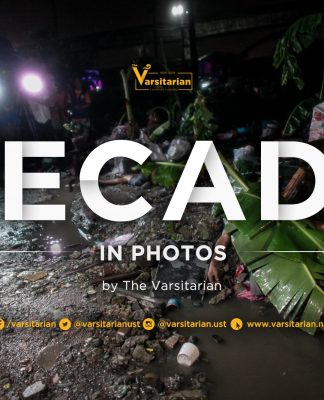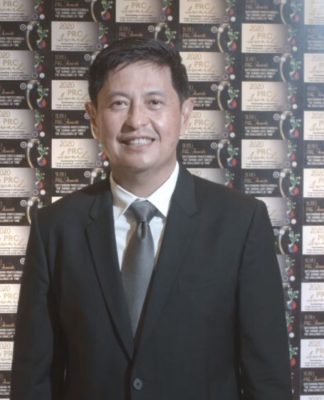FIRST the good news: UST is back in the Top 500 of the Times Higher Education Supplement-Quancquarelli Symonds (THES-QS) listing of the world’s universities. The bad news: the survey has become even less credible.
In the survey, Ateneo de Manila University pulled ahead of University of the Philippines to land 254th and become the top university in the country. This is not to disparage Ateneo, but how could an institution that’s barely an expanded liberal arts college and with only a smattering of degree programs tested by state licensure exams become the top Philippine university?
According to the PRC, the best performing universities are UP and UST, 274th and somewhere in the 401-500 bracket in the Times list. In coverage and quality of programs, UP and UST are the top universities in the country. But alas, the Times survey does not really grade quality of programs and graduates. None of its indicators really address these.
UST and UP, which sport well-defined academic portfolios in various areas of higher learning, have branded as “problematic” the indicators which THES-QS employed in its survey. At face value, this argument seems sour-grapping, but their observation is neither old-man whining nor childish nag. The survey indicators – research quality, graduate employability, international outlook, and teaching quality – may not be problematic, but the methodology is.
The research quality criterion was hardly defined except through the academic peer-review (40 percent) and citation-per-faculty (20 percent) indicators. According to the THES-QS website, 3,703 who responded out of 190,000 academics who were asked to do the peer review selected up to 30 institutions from their region(s) that they considered as the best in the following areas: arts and humanities, engineering and information technology, life science and bio-medicine, natural sciences and social science.
By this token, how then could Ateneo have outscored UST, UP and De la Salle University (another 401-500 dweller) considering that the Jesuit-run institution could only claim as virtual academic strongholds at best the arts and humanities and social sciences vis-à-vis the three other universities, which not also excel in the same areas (between them, UP and UST have the most number of National Artists and Centers of Excellence in the humanities, for instance) but which also could claim expertise and prestige in the more formal sciences and in IT and engineering.
It may be that Ateneo managed to top the three other universities because of its research output, but the kind of output to justify “research quality” in the survey was never specified.
As in the case of citation per faculty, how come the THES-QS managed to rate the four universities when in fact it did not have pertinent (read: outdated) data to “factor” the “research performance” of the four universities “against the size of its research body?” Meanwhile, graduate employability was anchored on employer/recruiter review (10%). So what professions were checked for employability? Apparently they were professions that did not require licensure exams and weren’t in the more relevant science and engineering fields where UST products excel commendably here and abroad.
The key to all of these indicators is perception. Much depends in fact on how well a school presents and markets itself before its peers and to the world. As Clarita Carillo, the vice-rector for academic affairs, puts it, “The ranking impacts on the public image of UST.” While it is good that UST is back in the list, its relative distance from its peers should show that it has much catching up to do not so much in academic excellence but in marketing and public relations.
But even if it improves its public image, it’s doubtful if UST will improve its rankings in a survey in which, in Carillo’s very cautious remarks, “reservations (have been made) about its validity and reliability.”
Very telling is the fact that student-faculty ratio became the statistical buttress of the survey’s teaching-quality objective. As the THES-QS said in its website, “the higher the number of faculty per student, the higher the score.” In short, the indicator equates classroom size with quality instruction. In reality, of course, we know this does not necessarily reflect on the quality of instruction in a university. Ateneo may have fewer students per faculty but this is because only the rich can afford its high tuition.
International outlook toward a university, gauged through the number of foreign faculty and students (5% each), again reeks of numerical irrelevance and perhaps a betrayal of reality. To be sure, who would want to study in a third-world university other than for reasons of geographical and cultural proximity and financial constraints?
The THES-QS said that for each indicator, the highest scoring institution was assigned a score of 100, and other institutions were calculated as a percentage of the top scorer, which Harvard University again attained for the nth time. How could Philippine universities compete with Harvard? As Carillo has noted, the survey did not consider the “local context of universities.”
In short, the survey was a questionable exercise at globalization. Sadly, Filipino education planners and managers missed out on the import and problematic aspects of the survey. Emmanuel Angeles, the new chair of the Commission on Higher Education, even said that should Philippine schools decide to advertise in Times publications and special projects, their rankings “would move forward.” Spoken in the tenor of an “enterprising” school teacher: “If you buy my sandwiches, you will get higher grades.”


















Wow. I didn’t know that UST was this bitter.
Goodness gracious. I don’t know why UST’s Varsitarian is targeting Ateneo, what with this article and the other one about Rizal’s hatred for UST and love for Ateneo being mythical.
I hope that you guys realize that these articles actually put down your school; indeed, they make you sound quite bitter, or rather, too defensive.
If you love your school, that’s great. 🙂 Just don’t go bashing other schools with all this trivial fact-finding for something that you yourselves think is bull.
Pathetic!
Please. Just accept the fact that you guys, specially the one who wrote this, are failures. You’re bragging about being such a good institution while many of your student are Highschool kickouts, dropouts, failures, etc. So please, just accept it. Everything will be much easier.
UST, this article cemented the fact that you really have insecurity issues.
“This is not to disparage Ateneo, but how could an institution that’s barely an expanded liberal arts college and with only a smattering of degree programs tested by state licensure exams become the top Philippine university?”
Wow, okay this is sort of like a no-offense statement, but I can clearly see your towards the Ateneo. Okay, first of all, don’t try to sound smart by posting a somewhat “formal” article and sounding reliable if you don’t have the complete facts behind. The very fact that you have so much hatred (and I will take into account your “no-offense” statement, but clearly you still seem furious at the Ateneo judging by your use of words) means that you yourself are very unreliable in saying that the survey that the THES has done is unreliable.
“By this token, how then could Ateneo have outscored UST, UP and De la Salle University (another 401-500 dweller) considering that the Jesuit-run institution could only claim as virtual academic strongholds at best the arts and humanities and social sciences vis-à-vis the three other universities, which not also excel in the same areas (between them, UP and UST have the most number of National Artists and Centers of Excellence in the humanities, for instance) but which also could claim expertise and prestige in the more formal sciences and in IT and engineering. ”
Okay. First, let me point out that the above statement is supposed to be in a question form, so don’t use a period. It’s just a minor error, but you want to sound smart by being formal. So be it. Use the right punctuation. Second of all, wisdom is not based on academic standing or knowledge in sciences. I believe wisdom is based on how people USE these resources, such as the sciences, to create a better society. And, you can’t just back up your statements with, “UP and UST have the most National Artists,” because you clearly don’t have enough data like percentages between school graduates. And, mind you, excellence can be in different forms, whether you’re a business, doctor, etc. You don’t to be some kind of National Artist to be excellent! My God! And you can’t even say that UST and UP “could claim expertise and prestige in the more formal sciences and in IT and engineering” because, again, you don’t have data to support it!
I don’t have anything against UST, but clearly you have some issues against other schools. If you truly were not insecure, they you wouldn’t have bashed other schools.
Isn’t it more pathetic that UST haters are still using this “old” article to post there senseless hatred towards UST. They are always vocal about their hatred about this school but still they have time to go to this UST “site” and look for an old article that satisfy their needs to find ways to bash UST.
Thanks for the effort guys!!! You definitely LOVE UST!!!
First, people who correct those who sound smart should be smart enough not to commit the same mistake, let alone in grammar. “I can clearly see your towards the Ateneo.” What happened to “you’re?” And perhaps you could add the verb “have” in your sentence to convey a COMPLETE thought: “You don’t to be some kind of National Artist to be excellent!” (Geez. This is elementary!)
Second, if you’re looking for facts, DO RESEARCH. You should realize first that this is a PRINT EDITORIAL (with limited paper space) that’s more oratorical than statistical to present numerical figures. Why don’t you get data from institutions like the Philippine Regulatory Commission? Commission on Higher Education? Or read related articles? Sources are a many.
“And, you can’t just back up your statements with, ‘UP and UST have the most National Artists'” First, it will be too pompous for the university to list all its National Artists to your satisfaction. However, it doesn’t take a lot of research to prove this claim since many have been written about them. And this is not a failure on the part of the editorial.
“Second of all, wisdom is not based on academic standing or knowledge in sciences. I believe wisdom is based on how people USE these resources, such as the sciences, to create a better society.” You bet, Anonymous! That is why the number of board and licensure exam passers has to be considered by THES since it shows a university’s quality of education for it to produce successful and competent graduates.
What the editorial wants to say is that THES results were unreliable, and the Ateneo being the unanimous case in point was merely accidental. Let us be intelligent with our comments, for in the end we disgrace nothing but ourselves and the universities we came from.